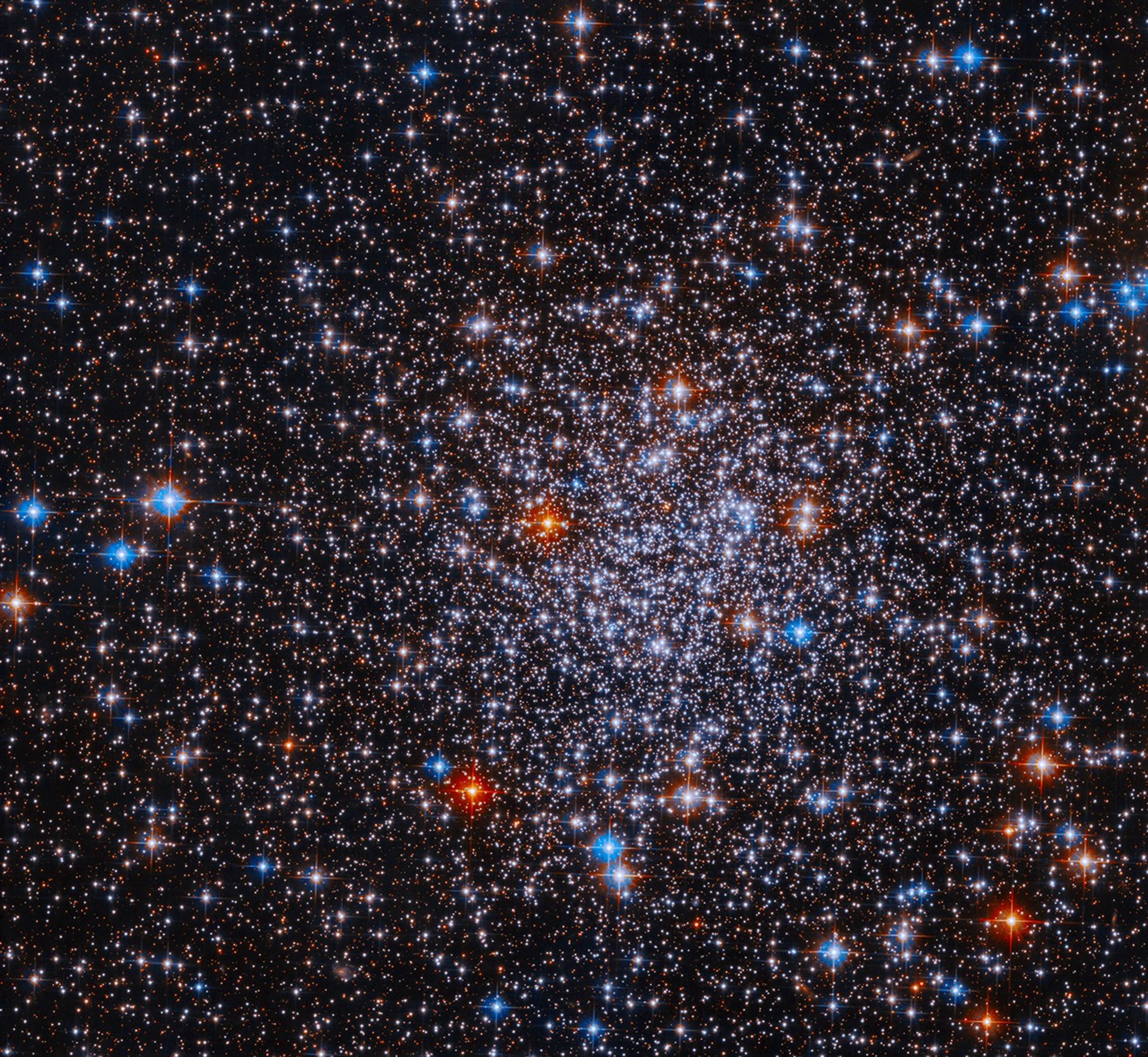Resembling an aerial fireworks explosion, this dramatic image of the energetic star WR124, taken by the Hubble Space Telescope, reveals that it is surrounded by hot clumps of gas being ejected into space at speeds of over 100,000 miles per hour.
Also remarkable are vast arcs of glowing gas around the star, which are resolved into filamentary, chaotic substructures, yet with no overall global shell structure. Though the existence of clumps in the winds of hot stars has been deduced through spectroscopic observations of their inner winds, Hubble resolves them directly in the nebula M1-67 around WR124 as 100 billion-mile wide glowing gas blobs. Each blob is about 30 times the mass of the Earth.
The massive, hot central star is known as a Wolf-Rayet star. This extremely rare and short-lived class of super-hot star is going through a violent, transitional phase characterized by the fierce ejection of mass. The blobs may result from the furious stellar wind that is unstable as it flows into space. As the blobs cool, they eventually will dissipate into space and so don't pose any threat to neighboring stars.
The star is 15,000 light-years away, located in the constellation Sagittarius. The picture was taken with Hubble's Wide Field Planetary Camera 2 in March 1997. The image is false-colored to reveal details in the nebula's structure.
Image credit: NASA/Yves Grosdidier (University of Montreal and Observatoire de Strasbourg), Anthony Moffat (Universitie de Montreal), Gilles Joncas (Universite Laval), Agnes Acker (Observatoire de Strasbourg)































